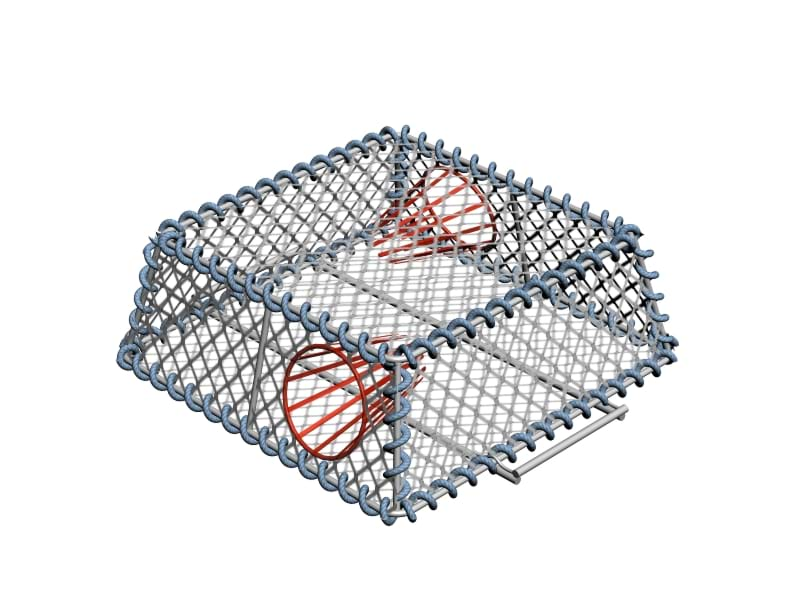Pots and Traps - Cuttlefish
Summary
Cuttlefish traps are usually larger than most other traps but of lightweight construction. Most of them have two entrances made up of a circle of plastic ‘fingers’ designed let the cuttlefish enter the trap easily but difficult for them to escape from. Most of the fishing for cuttlefish with traps is done on the south coast of England, usually on a seasonal basis.

Environmental impact
As with most other pots and traps there is very little environmental or seabed impact from cuttlefish traps. They are very light traps so very little impact on the seabed. There is not usually much evidence of ghost fishing. With it being a seasonal fishery, usually in the summer and autumn when there is better weather there are not many losses due to bad weather. The need to haul the gear everyday fishery also reduces the instances of lost gear. If the gear is lost the design of the entrances is such that most fish and shell fish can easily escape.
By catch is minimal with any small fish easily escaping through the large entrances and any undersize cuttlefish being released unharmed as soon as the gear is hauled.
Other information
In SE of England some vessels use traps for cuttlefish at certain times of the year. This is a direct replica of a fishery on the French side of the English Channel. It is a seasonal fishery when the cuttle fish come close inshore to mate and spawn. The pots are quite large with some being over one metre in diameter and 500mm high but they are very light in both construction and weight. They are similar to fish traps that are used in some other countries to target fish. The traps are either square or round, made from thin steel bars covered with thin netting. They have 2 or three cone shaped entrances fitted around the sides. Originally these were made from net or wire netting but often now they are purpose made plastic entrances that have a series of flexible plastic fingers on them. These fingers are not fixed at their inner end and are free to bend outwards easily as the cuttlefish enters the trap but then they will spring back to shape and make it very difficult to escape again.
Gear classification
Main target species (UK)
-
- Cuttlefish
Possible bycatch
-
- Very little bycatch